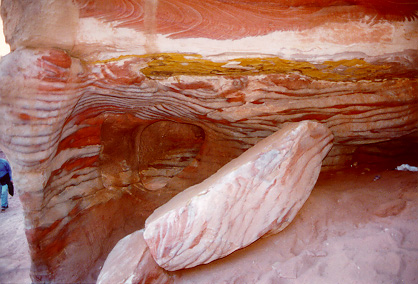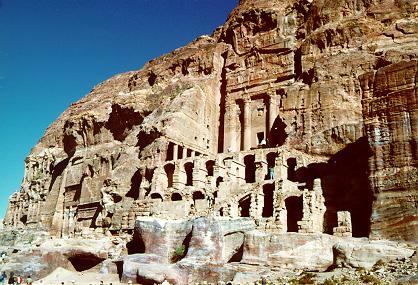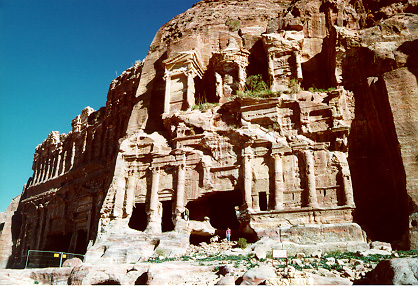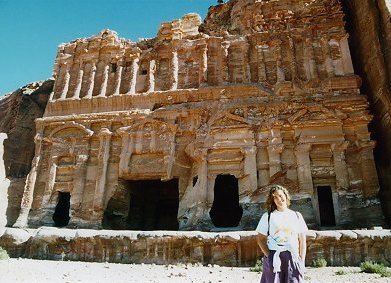
The Rose-Red City of Petra
![]()
| The jewel of South Jordan is Petra, the unique 2,000-year-old rock-carved city. Carved entirely into the rose-red cliffs, the remains of the once lost Nabataean city of Petra includes temples, Roman theaters, monasteries, houses and roads. Petra flourished for over 400 years around the time of Rome and Christ, until it was occupied by the Roman legions of the emperor Trajan in 106 A.D. The Petra basin boasts over 800 individual monuments that were mostly carved from the kaleidoscopic sandstone by the technical and artistic genius of the Nabataeans. The wealth and political power of the Nabataean people derived from their control of the international trade routes that linked China, India and Southern Arabia with the wealthy Mediterranean markets such as Anatolia, Greece, Rome, Egypt and Syria. Lost to outsiders for hundreds of years, Petra has been a symbol of the hidden treasures of the Near East since its rediscovery in 1812 by the Swiss explorer John Ludwig Burckhardt. |
![]()







